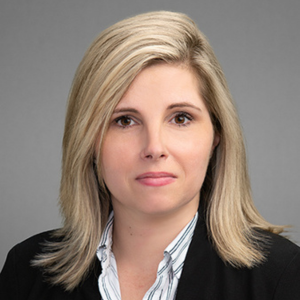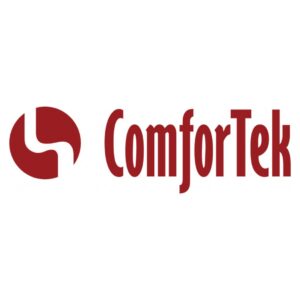Going ‘green’ in long-term care
As times quickly change, environmental responsibility has become a national issue and is being discussed in politics, the business world, communities, and at home. The general meaning of the term “green” has developed from movements that share many ideas—ecology, environmentalism, and conservation. Ideas of green can easily be implemented into long-term care facilities.
Former Vice President Al Gore’s movie on global warming, An Inconvenient Truth, brought environmental responsibility to the mainstream public. From the largest company to the individual consumer, public expectations around environmental concerns are developing rapidly. It has become more than “recycle, reduce, and reuse” for consumers. As economic concerns loom, the green movement is working its way into all facets of American industry, units of government, and service.
During the early 1990s, I began my journey to understand environmental issues involved with cleaning chemicals. I was able to see firsthand the use of caustic products in the name of disinfection. When managing maintenance and housekeeping departments at various healthcare facilities, I identified the use and application of chemicals and developed protocols for diluted products that reduced costs and made the jobs of housekeepers less dangerous by identifying safer products. At that time, new developments were taking place in the field of cleaning, maintenance, and safety for organizations.
Environmental stewardship
Green Seal, a 501(c)(3) nonprofit organization, began implementing cleaning product standards in 1991.1 According to Green Seal, the definition of green cleaning is the use of products and procedures that are more healthful and have less environmental impact than others that serve the same function.2 In the middle 1990s, governmental standards were researched and established in an effort with the EPA and Aastrom Biosciences, Inc., for environmentally preferable cleaners.
In 1998, I became an environmental services director in an assisted living/healthcare facility of the School Sisters of Notre Dame (SSND) in Mankato, Minnesota. Established in 1912, SSND of Mankato is one of 20 Catholic international provinces throughout the world. I had the opportunity to work with the Center for Earth Spirituality and Rural Ministry (CESRM), founded in 1996, on staff development projects for Environmental Services. In interacting with the sisters of this ministry, I was introduced to the concepts of environmental stewardship and ecological awareness. These ideas blended well with my own cleaning ideas and product background.
Recent advancements in the cleaning industry have led to products that perform as well as traditional counterparts that are more caustic. Since 2003, Environmental Services of SSND has used Green Seal cleaning products that are flexible enough to be used more than just as a general cleaner. Most important, the products are readily biodegradable with no toxins or carcinogens, and save money. Environmental Services is using paper products and hand soaps that have the Green Seal, in addition to chemical cleaner changes. Currently, Environmental Services is searching for new technology to meet its needs. Biodegradable garbage bags made of cornstarch materials are now available. New floor strippers and wax have just been released as well, and SSND has made our facility available as a test site for new Green Seal products. New guidelines are being established for paper products, matting systems, air control, recycling programs, and natural light levels.
Buildings and structures
A completely new outlook is being established about buildings and structures. The U.S. Green Building Council (USGBC) is the nation’s foremost leader in the building industry, working to promote facilities that are environmentally responsible, profitable, and healthy places to live and work. The Leadership in Energy and Environmental Design (LEED) is a green building rating system developed by the USGBC as a voluntary, consensus-based standard for developing high-performance, sustainable buildings.3
At SSND, Notre Dame Hall was completed in 2004. Isidore and Theresa halls were remodeled. The projects approached the renovation with green values in mind. Original 1912 materials were used, such as brick, stone, and original doors. The carpeting contains low chemical content and is mostly cleaned by using water. The green concept can also be applied to the use of energy. Newer SSND living spaces use natural light, energy-efficient light, and windows. Energy-efficient boilers were installed and the use of a chiller and recovery ventilators create major energy savings. Contracting Business magazine, which featured the SSND remodel, summarized the project as bringing a 100-year-old facility into the 21st century.4
Most departments at SSND have been involved with green concepts. In 2003, the vehicle fleet of SSND added the Toyota Prius, a hybrid vehicle. The first prototype car was developed in the mid-1990s to be the first car to answer the environmental concerns of the 21st century, by using battery power and cutting fuel emissions.5 The grounds department has taken great measures to develop a sustainable landscape, a compost site, and uses an organic approach to enrich the soil. The food service department uses the compost site, makes seasonal purchases from a local farmer, and is working on improving recycling. CESRM serves as an educational, spiritual, and community resource for the surrounding land and people.6 The center embodies the concepts of green through past and present principles of ecological awareness and environmental justice. CESRM promotes green living through workshops, organic gardens, and political involvement.
The green concept is being studied in the business world. It is popular with information technology (IT), and has been given names such as “green computing.” Large companies are looking at cutting operating costs and establishing data center monetary efficiency by using green ideas. The electronic product environmental assessment tool was created by electrical and electronic engineers to implement green criteria in IT. Green ideas include: reducing carbon emissions from large data centers, using alternative energy sources, increasing video conferencing to reduce traveling, and developing return recycling programs like those at Hewlett-Packard (HP), a company that plans on a billion pounds of returned product to be recycled or to be used for parts.7
SSND’s purchasing department is currently participating in an ink cartridge recycling program with HP. Just this year, this program saved the sisters money through return programs and incentives for free printers and electronic equipment.
The tech industry is gaining attention because of the United Nations’ estimates of more than 20 million tons of computer gear and cell phones worldwide getting dumped into landfills each year, and this activity is the fastest-growing waste factor.7 SSND IT uses computers to the end of the computer’s useful life, clears them of confidential materials for security reasons, and then recycles them at the Mankato Recycling Center. SSND IT buying criteria for personal computers follow the latest EPA ratings for computers.
The green bandwagon
The business world is climbing onto a green bandwagon. Environmentally unpopular companies such as Wal-Mart and Dupont are approaching the green movement with a bottom-line approach. Dupont, one of the top polluting companies in the United States, has saved billions of dollars by reducing carbon emissions.8 Business companies are finding that by going green they are increasing profits, getting good publicity, and helping the environment. Some environmental groups, such as Environmental Defense, are forming partnerships with large business companies and offering ways to improve. Environmental affiliates hope that business will continue to pursue alternative and safer ways to approach the environment. For example, UPS and Federal Express fuel-efficient truck programs are exploring the use of alternative fuels. An additional challenge for these companies is to continue their interest in reducing their impact on the environment. The key to success is to increase mainstream interest of consumers and business. Green is spreading beyond consumerism and business principles. Cities all across America are analyzing sustainability plans for more efficient government. Many new initiatives for green development in the United States government are on the horizon for 2009. As a result, a collective consciousness of the concern for the environment would transform the values of society.9
Conclusion
I have experienced the exponential growth of articles, information, and advertisements covering the latest environmental issues. Green ideas have room to expand to become a part of the mainstream through better consumer habits and business practices. Latest economic suffering has merged the ideas of green sustainability with utilization of resources. Pro-action momentum will help further environmental issues, unlike the traditional reactionary approach. The power of social acceptance of environmental perspectives is vital and will be the defining factor for generations to come.10
Marty Beil, BS, is an Assistant Administrator at the School Sisters of Notre Dame (SSND), Mankato, Minnesota. He founded the “Green Team” at SSND and is working as chairman of the SSND Green Team Committee. He can be reached at
To send your comments to the author and editors, e-mail mbeil0109@iadvanceseniorcare.com.
References
- About Green Seal. Green Seal. Available at: https://www.greenseal.org.
- Weissmen AB. Green Seal Sees Revolution Continuing. Cleaning & Maintenance Magazine 2006; 7:22.
- Weissmen AB. USGBC Builds Strong Foundation. Cleaning & Maintenance Magazine 2006; 7:26.
- Design/Build of a Divine Order. Contracting Business 2004;12:48.
- Liker JK. The Toyota Way. New York:McGraw-Hill, 2004.
- Center for Earth Spirituality and Rural Ministry. School Sisters of Notre Dame. Available at: https://www.ssndmankato.org.
- Kolbasuk Mcgee M. Green Is Good. Information Week 2007 ;3: 39-45.
- Linn A.The Business Case for Going Green. MSNBC April 2007.
- Tolle E. The Power of Now. Canada:Namaste Publishing, 1997.
- Bell, J. Six products, six carbon footprints. Wall Street Journal. Oct 6, 2008; R1.
Sidebar
Environmental Preservation Has Deep Roots
Realization of the value of the environment dates back several centuries in America. Expanding urbanization would create many reactionary measures that would attend to issues created by city expansion. In the nineteenth century, industrialism expanded the degradation of the environment. In literature at the time, Henry David Thoreau’s Walden (1854) emphasized the power and the tranquility of nature. As president of the United States, both Theodore and Franklin Roosevelt enacted environmental programs that addressed natural resources and wildlife.
In the 1960s, the concept of ecology emerged as cities grew larger. Pollution, urban water, and environmental impact became public concerns. In early 1970, the Environmental Protection Agency (EPA) was formed and the first Earth Day was observed. In the 1980s, the response to environmental problems continued. Environmental justice is a movement that developed during this time that focused on urban standards. The movement grew organically out of local and national struggles, events, and out of other social movements. Into the 1990s, further events and organizations would develop. In 1992, the world responded to the environment with an international Earth Summit and the development of an Earth Charter.
The 21st century has seen development of the Kyoto Accord and the awarding of the Nobel Peace prize to former Vice President Al Gore for his documentary An Inconvenient Truth.
—Marty Beil
I Advance Senior Care is the industry-leading source for practical, in-depth, business-building, and resident care information for owners, executives, administrators, and directors of nursing at assisted living communities, skilled nursing facilities, post-acute facilities, and continuing care retirement communities. The I Advance Senior Care editorial team and industry experts provide market analysis, strategic direction, policy commentary, clinical best-practices, business management, and technology breakthroughs.
I Advance Senior Care is part of the Institute for the Advancement of Senior Care and published by Plain-English Health Care.
Related Articles
Topics: Articles , Facility management , Housing











